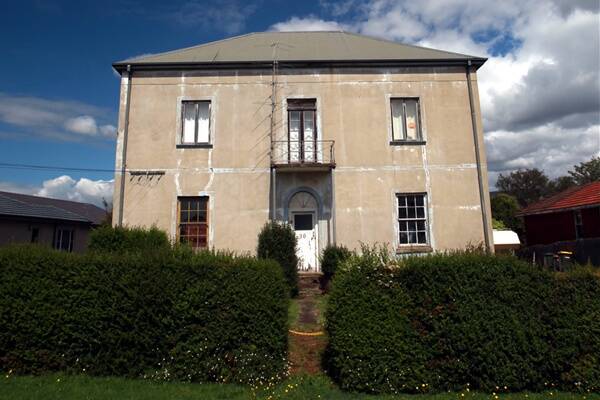
The confidence of Wollongong City Council’s planning director Andrew Carfield in suggesting that letter writer Michael Organ is wrong and that Judge Roger Therry’s residence in Bukari St is not Wollongong’s “oldest house” (Mercury, November 15) is surprising.The Therry house known to historians as Keera Vale is, according to Mr Carfield, “pre-dated by a small number of remaining residential buildings”. He then cites three examples of older houses – Horsley Homestead, Marshall Mount House and a stockman’s hut “incorporated into Nudjia at Unanderra”. Unfortunately, in asserting that “Horsley Homestead” at Dapto dates from 1842, Mr Carfield is displaying more certainty than the facts warrant. In doing so he also unintentionally highlights some of the wisdom found in the adage which suggests that “a good historian needs a good set of walking boots”.Indeed, if Mr Carfield had made a visit all the way to Dapto, he may have been able to learn that Horsley Homestead’s floorboards have a tale to tell. Those floorboards indicate that the residence has been extended at some stage, making it hard to ascribe a specific date of construction. Mr Carfield’s guesstimate of 1842 is thus precisely that – a guess. His similarly brave assertion that Henry Osborne’s Marshall Mount House dates from 1838-1840 is but another triumph of confidence over hard evidence.The 1841 NSW Census describes Mr Osborne’s house as “wooden” and so it is highly unlikely to be the same building found at Marshall Mount today.In his haste to chastise Mr Organ, Mr Carfield must also have missed the use of the word “circa” by the NSW Heritage Council’s website. That little word clearly suggests that they too are making a guesstimate as to the date of construction of the surviving single-storey section of the Osborne family’s home.Mr Carfield’s third candidate for oldest European structure - a stockman’s hut at Unanderra - is the most surprising of all. The task of dating any colonial hut would strike most scholars as rather like clutching at straws. No definite date of construction can thus be ascribed to any of the buildings Mr Carfield lists as contenders for Wollongong’s oldest residence.Keera Vale in Bukari St, however, is a completely different matter. Unusually, we are fortunate to possess exceptionally precise evidence for its date of construction. The Sydney Morning Herald (October 26, 1844, page 3) contains an advertisement for the lease of “the Farm of Keera Vale, Illawarra” and states there is a “commodious two-storied house, advancing rapidly towards completion, and will be fit for the reception of a family about the 1st of January’’.I would thus venture to suggest that Mr Carfield should try to open up a more polite dialogue with a knowledgeable researcher such as Mr Organ. Utilising the historical skills of residents who have an active interest in the city’s architectural heritage may be of some help to Mr Carfield in carrying out his demanding role as custodian of the planning and management of Wollongong’s built environment.Quibbling about the unknowable dates of the tiny handful of really old houses still standing in Wollongong does not strike me as a fruitful enterprise. Indeed, it only tends to confirm the rather dispiriting view that most history is guessing and the rest is prejudice.Joseph Davis is an Illawarra historian.
Subscribe now for unlimited access.
$0/
(min cost $0)
or signup to continue reading

